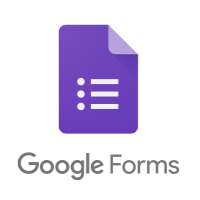The Art of Article Popularity: Parsing Data for Insights
January 7, 2025, 4:24 am

Location: United States, California, San Francisco
Employees: 1001-5000
Founded date: 2008
Total raised: $350M
In the digital age, writing is akin to casting a fishing line into a vast ocean. You hope to catch the attention of readers, but how do you know what bait works best? Understanding the popularity of articles is crucial for writers and agencies alike. It’s not just about putting words on a page; it’s about connecting with an audience. This article explores the methods of evaluating article popularity through data parsing, offering insights into what resonates with readers.
The journey begins with a writer’s quest for feedback. Imagine standing on a stage, delivering a speech, but the audience’s reactions are muffled. This is how many writers feel when they publish articles. Comments may be sparse, and views can be misleading. A piece that garners thousands of views might receive only a handful of comments. This discrepancy can leave authors scratching their heads, wondering what truly engages their audience.
To bridge this gap, one writer decided to take matters into his own hands. He developed a script to automate the collection of article metrics—views, comments, bookmarks, and ratings. This tool became his compass, guiding him through the fog of uncertainty. By analyzing these metrics, he could discern patterns and preferences among readers.
The process of data collection is akin to mining for gold. Each metric is a nugget of information that reveals the interests of the audience. For instance, an article about automating document generation amassed 75,000 views on one platform but barely registered on another. This stark contrast highlights the importance of understanding where to publish and what topics to pursue.
The writer’s tool is not just a personal project; it’s an open-source solution available on GitHub. This democratization of data collection allows other authors and agencies to benefit from his findings. By using Google Apps Script and Node.js, he created a robust system that can adapt to various platforms. The beauty of open-source is that it invites collaboration and improvement from the community.
As he delved deeper into the mechanics of data parsing, he encountered challenges. Some platforms restrict access to certain data, requiring a shift from Google Apps Script to Node.js. This transition is like upgrading from a bicycle to a motorcycle—faster and more powerful, but also more complex. Node.js allows for intricate data extraction, enabling the writer to gather insights that were previously out of reach.
The writer’s analysis revealed a fascinating trend: different platforms attract different audiences. For example, technical articles thrive on platforms like Habr, where readers seek in-depth knowledge about software and programming. In contrast, investment-related content resonates more on sites like SmartLab, where discussions revolve around economics and market trends. This understanding is vital for writers aiming to tailor their content to specific audiences.
The metrics themselves serve as a map. Views indicate interest, comments reflect engagement, bookmarks suggest long-term value, and ratings provide an overall approval score. By analyzing these elements, writers can adapt their style and topics to better align with audience preferences. It’s a continuous cycle of feedback and improvement.
Moreover, the writer’s experience underscores the importance of timing. Articles published at strategic moments can significantly impact their popularity. A piece about a trending topic can skyrocket in views, while a similar article published at a less opportune time may languish in obscurity. Timing is the secret ingredient that can turn a good article into a great one.
As the writer continued to refine his approach, he realized that the key to success lies in understanding the audience’s pulse. By examining data from various platforms, he could identify emerging trends and hot topics. This proactive approach is akin to being a weather vane, always turning to face the direction of the wind.
The process of collecting and analyzing data is not just about numbers; it’s about storytelling. Each metric tells a story about the audience’s interests and preferences. By weaving these narratives into future articles, writers can create content that resonates deeply with readers. It’s about crafting a message that speaks to the heart of the audience.
In conclusion, the art of evaluating article popularity through data parsing is a powerful tool for writers. It transforms the act of writing from a solitary endeavor into a collaborative dialogue with readers. By harnessing the power of metrics, writers can navigate the vast ocean of content and find their niche. The journey is ongoing, but with each article, they draw closer to understanding what truly captivates their audience. In this digital landscape, knowledge is not just power; it’s the key to unlocking the hearts and minds of readers.
The journey begins with a writer’s quest for feedback. Imagine standing on a stage, delivering a speech, but the audience’s reactions are muffled. This is how many writers feel when they publish articles. Comments may be sparse, and views can be misleading. A piece that garners thousands of views might receive only a handful of comments. This discrepancy can leave authors scratching their heads, wondering what truly engages their audience.
To bridge this gap, one writer decided to take matters into his own hands. He developed a script to automate the collection of article metrics—views, comments, bookmarks, and ratings. This tool became his compass, guiding him through the fog of uncertainty. By analyzing these metrics, he could discern patterns and preferences among readers.
The process of data collection is akin to mining for gold. Each metric is a nugget of information that reveals the interests of the audience. For instance, an article about automating document generation amassed 75,000 views on one platform but barely registered on another. This stark contrast highlights the importance of understanding where to publish and what topics to pursue.
The writer’s tool is not just a personal project; it’s an open-source solution available on GitHub. This democratization of data collection allows other authors and agencies to benefit from his findings. By using Google Apps Script and Node.js, he created a robust system that can adapt to various platforms. The beauty of open-source is that it invites collaboration and improvement from the community.
As he delved deeper into the mechanics of data parsing, he encountered challenges. Some platforms restrict access to certain data, requiring a shift from Google Apps Script to Node.js. This transition is like upgrading from a bicycle to a motorcycle—faster and more powerful, but also more complex. Node.js allows for intricate data extraction, enabling the writer to gather insights that were previously out of reach.
The writer’s analysis revealed a fascinating trend: different platforms attract different audiences. For example, technical articles thrive on platforms like Habr, where readers seek in-depth knowledge about software and programming. In contrast, investment-related content resonates more on sites like SmartLab, where discussions revolve around economics and market trends. This understanding is vital for writers aiming to tailor their content to specific audiences.
The metrics themselves serve as a map. Views indicate interest, comments reflect engagement, bookmarks suggest long-term value, and ratings provide an overall approval score. By analyzing these elements, writers can adapt their style and topics to better align with audience preferences. It’s a continuous cycle of feedback and improvement.
Moreover, the writer’s experience underscores the importance of timing. Articles published at strategic moments can significantly impact their popularity. A piece about a trending topic can skyrocket in views, while a similar article published at a less opportune time may languish in obscurity. Timing is the secret ingredient that can turn a good article into a great one.
As the writer continued to refine his approach, he realized that the key to success lies in understanding the audience’s pulse. By examining data from various platforms, he could identify emerging trends and hot topics. This proactive approach is akin to being a weather vane, always turning to face the direction of the wind.
The process of collecting and analyzing data is not just about numbers; it’s about storytelling. Each metric tells a story about the audience’s interests and preferences. By weaving these narratives into future articles, writers can create content that resonates deeply with readers. It’s about crafting a message that speaks to the heart of the audience.
In conclusion, the art of evaluating article popularity through data parsing is a powerful tool for writers. It transforms the act of writing from a solitary endeavor into a collaborative dialogue with readers. By harnessing the power of metrics, writers can navigate the vast ocean of content and find their niche. The journey is ongoing, but with each article, they draw closer to understanding what truly captivates their audience. In this digital landscape, knowledge is not just power; it’s the key to unlocking the hearts and minds of readers.
